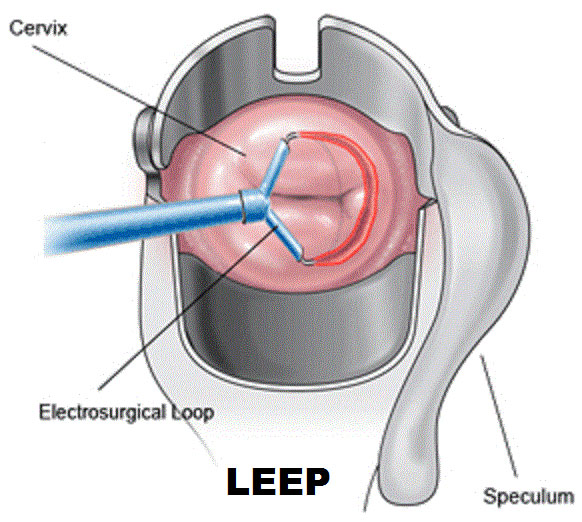LEEP (Loop Electrosurgical Excision Procedure)
- One of the techniques to prevent cervical cancer.
- A safe and effective method.
In most cases, abnormal cells of the cervix heal spontaneously. However, they can often develop into cancer. The treatment of precancerous cells is very effective in preventing cervical cancer. Therefore, it is very important for women to regularly perform the Pap test and carefully follow up any cellular abnormalities. LEEP is one of the treatments reserved for precancerous cells.
What is LEEP?
LEEP comes from English and is an abbreviation for the procedure called Loop Electrosurgical Excision Procedure. In English, it would be the Loop Electrosurgical Excision Procedure. LEEP performs the removal of abnormal tissue by cutting it with a loop (LOOP) that carries electric current. It can be performed in the case of abnormal Pap Test, during a colposcopy, or even when a cervical biopsy is indicated.

How effective is LEEP?
LEEP cures the problem (precancerous condition) in 90% of cases. If LEEP does not cure the problem, it can be repeated or followed by another procedure that the gynecologist will choose for further treatment.
How is LEEP performed?
LEEP usually lasts about 10 minutes. It can be performed in outpatient conditions or in the hospital. It requires only local anesthesia. The patient stays in the gynecological position. Then, the cervix is examined with a speculum and various solutions (acetic acid or Lugol) are applied to it so that areas with abnormal cells are more clearly visible. With the loop, suspicious areas are removed and sent for biopsy which will confirm that the procedure was successful. At the end of the procedure, coagulation of the vessels can also be performed to control hemorrhaging (if there is any).
In which period of the cycle is LEEP performed?
LEEP is performed after the end of menstruation.
What to expect after the LEEP procedure?
- There may be mild pain in the form of cramps, which may require the use of paracetamol or ibuprofen.
- There may be transparent or slightly dark brown secretions. This may last 2-4 weeks and is not at all significant.
- In the following 3-4 weeks, intravaginal showering or tampons should not be used.
- In the following 3-4 weeks, sexual contact should be avoided.
LEEP and pregnancy
Usually, gynecologists postpone the LEEP procedure until after birth if the patient is pregnant. This postponement does not put the patient at risk as the evolution of precancerous cells of the cervix into cancerous cells is very slow.